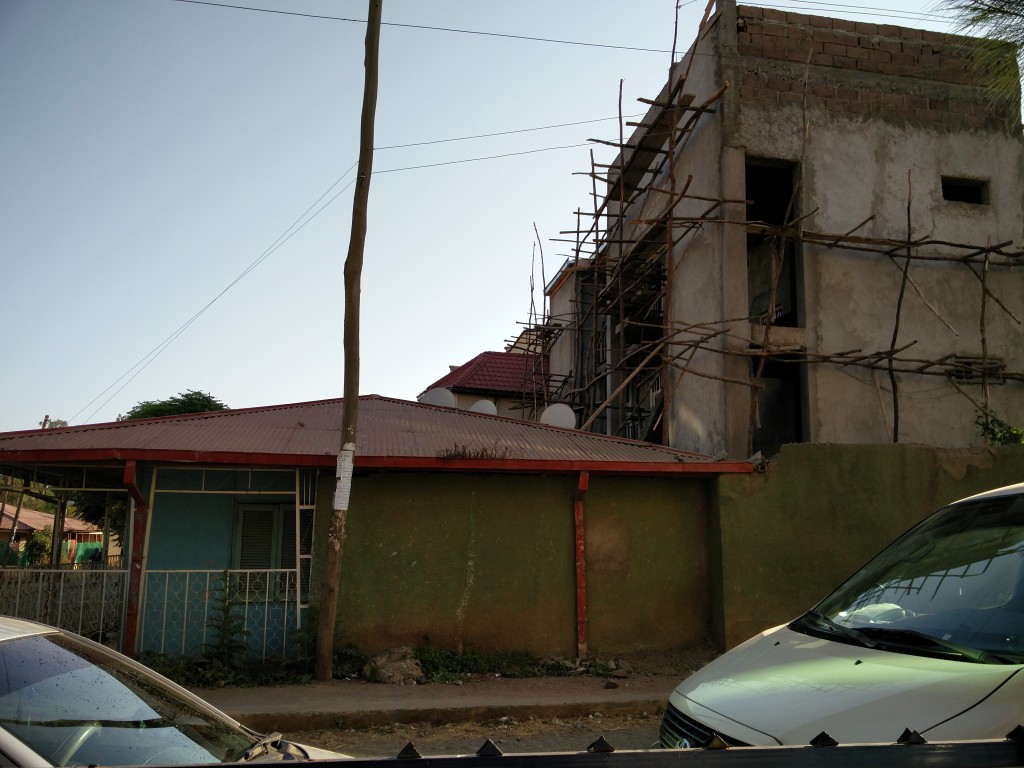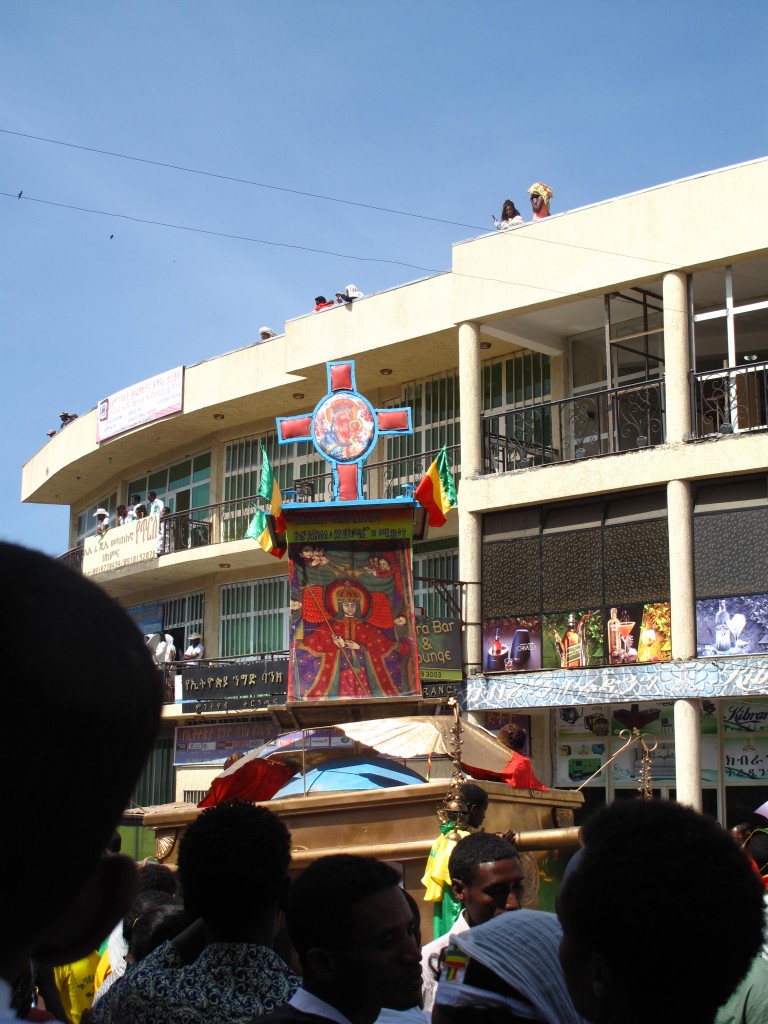We arrived a bit dazed and confused to the Addis Ababa airport after a long overnight journey from Morocco (via Egypt). Luckily, while we waited for our connecting flight to a small town called Gondar, we were greeted with a coffee ceremony to perk us up, an important tradition in a country that is considered the birthplace of coffee (called bunna).
During the ceremony, a woman (often wearing a beautiful traditional dress called a habesha kemis) sits at a carved wood bench called a rekbot, roasts the green beans in a pan, grinds them once they turn black, and then slowly stirs them into a clay pot called a jebena. The mixed aroma of roasting beans and frankincense and myrrh incense is intoxicating while you wait for the coffee to brew. When it’s ready, the woman pours the coffee into a tray full of small cups called cini and serves the coffee to the guests, from oldest to youngest. While back in the States, we usually found Ethiopian coffee a bit too strong and bitter for our tastes, here it was smooth and delicious!
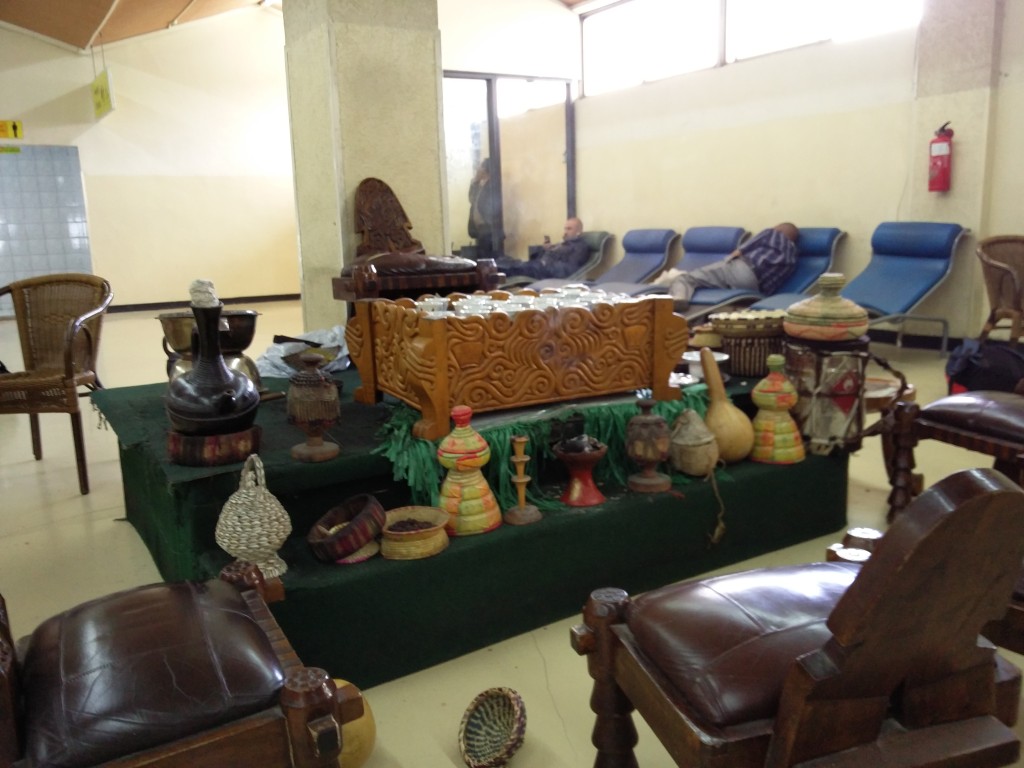
We also enjoyed a beer after the Moroccan dry spell. Habesha was our first beer and the ancestral name that many Ethiopians and Eritreans identify with more strongly than Ethiopian (which was coined by a Greek explorer and referred to the ‘burnt skin’ of people inhabiting the Horn of Africa).
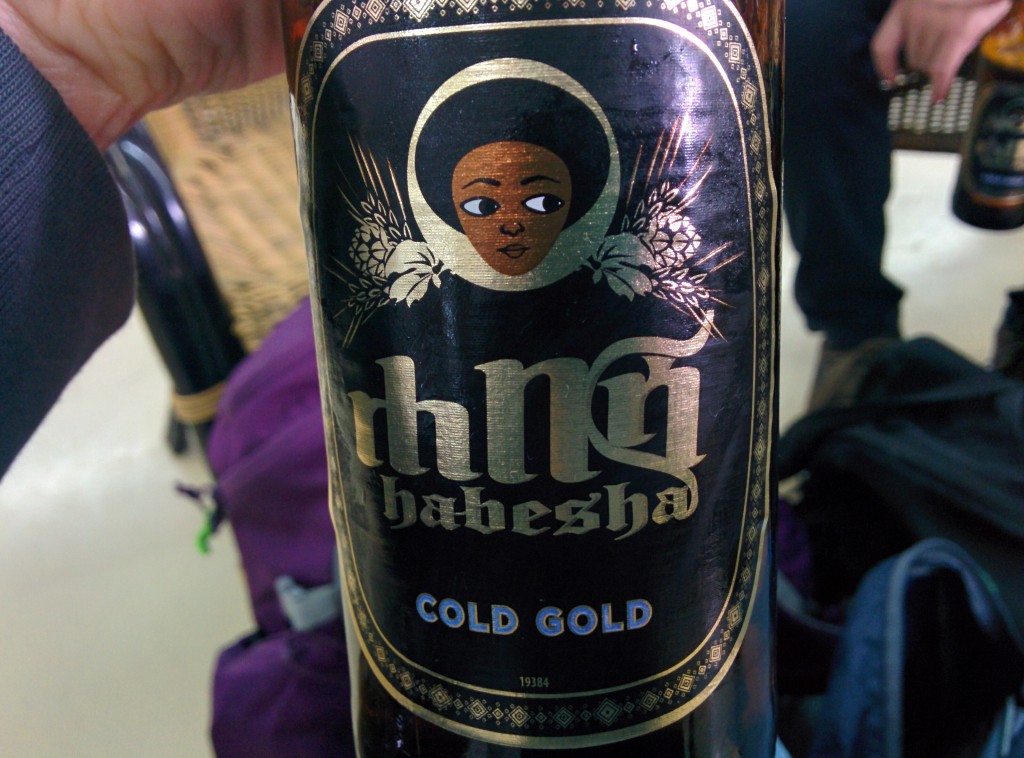
After arriving at the Gondar airport, we hopped in a cab (with a driver who spoke almost no English). Halfway to the town, we began to see a large cluster of white in the distance. As we got closer, the cluster engulfed our car and hundreds of people were waving sticks, yelling, and jumping around us.
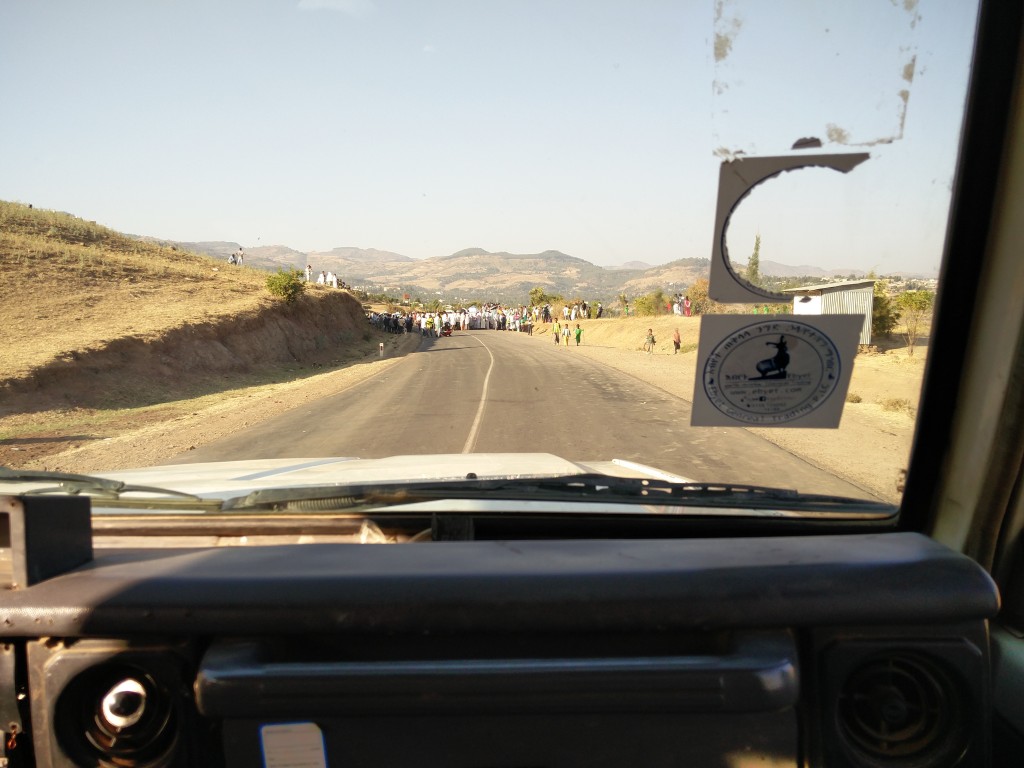
In our exhausted, uninitiated state, this was at first a little overwhelming. But, given the overjoyed expressions and enthusiastic reaction when we waved, we quickly realized that we were just in the middle of a happy Timkat celebration. Timkat (the Ethiopian Orthodox version of Epiphany) is a large festival commemorating the baptism of Jesus by John the Baptist in the Jordan River. Gondar has one of the biggest Timkat celebrations in the country, so we decided to check it out on our way to the Simien Mountains.

A woman holding a festive upside-down umbrella walked up to the window and after a few awkward moments, we realized that it’s customary to make an offering for Timkat. So we dropped a few coins in the umbrella and the crowd cheered loudly and opened up to let us pass through.

We got to the edge of town and realized that our driver had no idea where our hotel was (even though he nodded confidently when we first told him the name at the airport). Our GPS wasn’t working either so we drove around aimlessly through Timkat-related traffic jams and herds of goats and donkeys to finally arrive at our hotel, more than 30 hours after we set out the previous day.
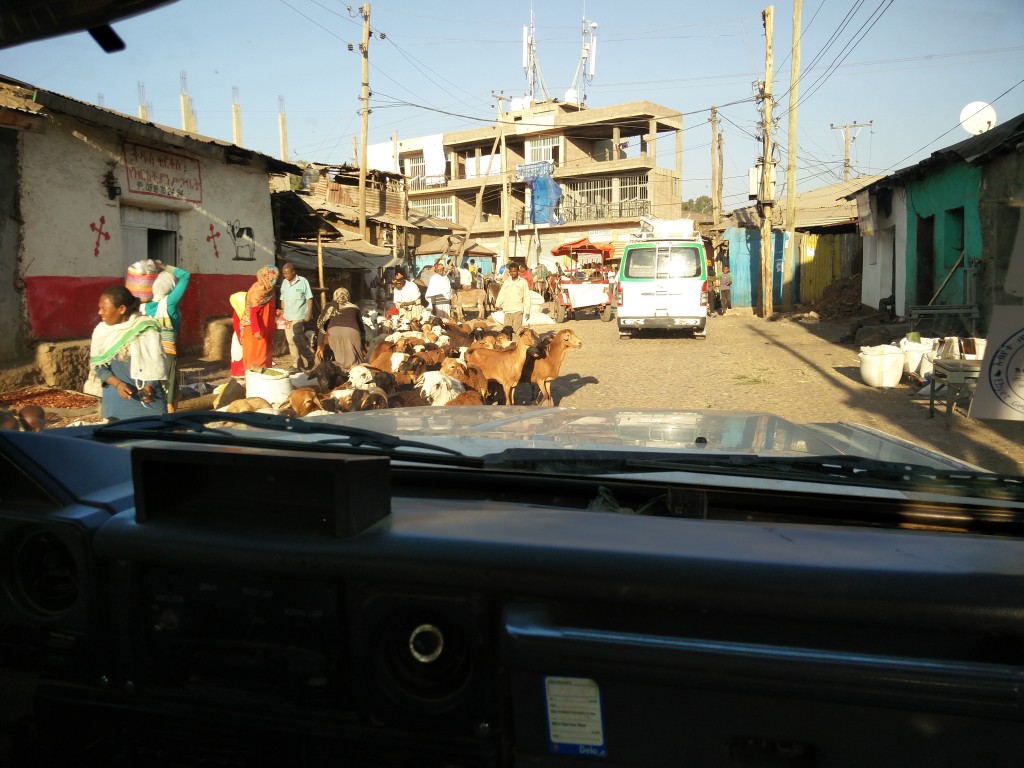
After we got settled, we got our first taste of delicious injeera and shiro.

Enjoyed Ethiopia’s many beers.
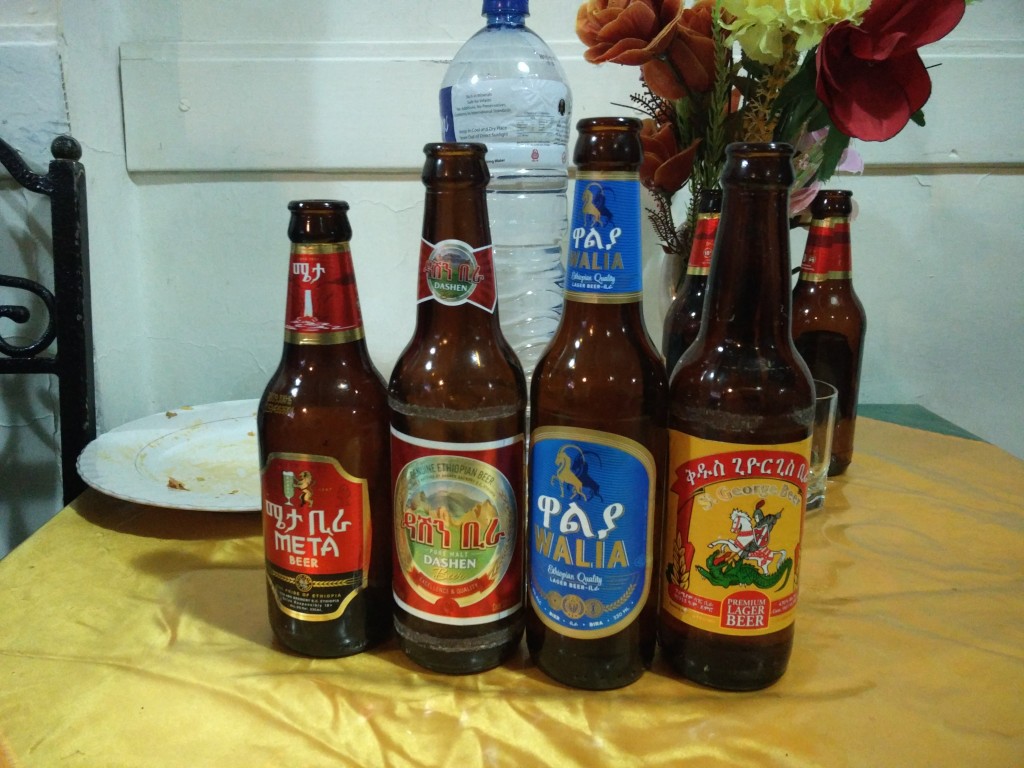
Got an eyeful of the Ethiopian scaffolding technique, probably not up to OSHA standards.
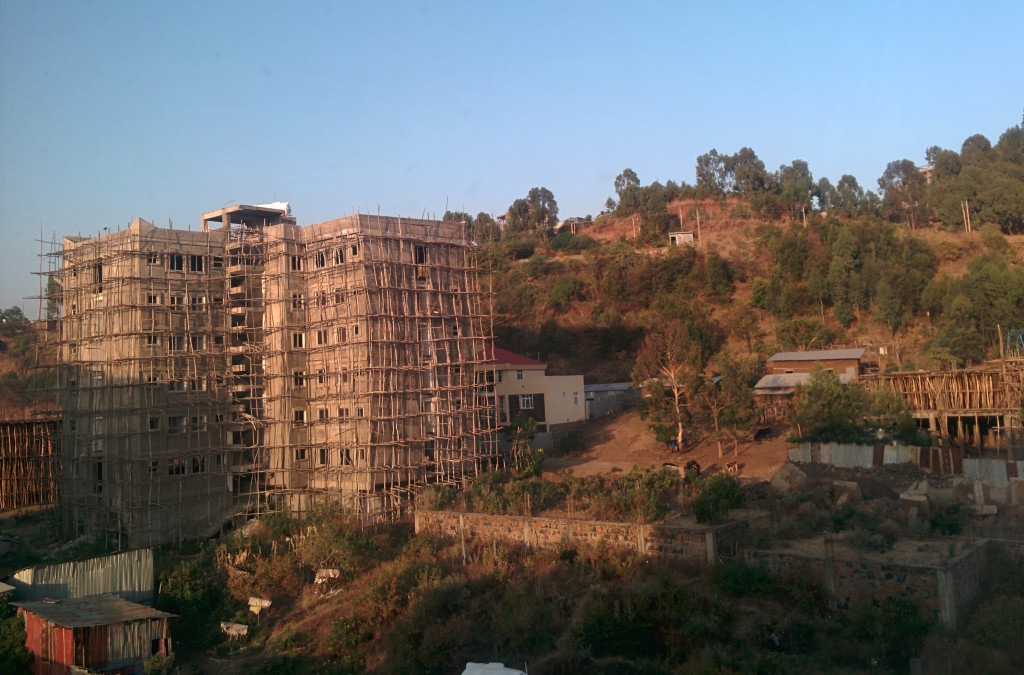
And enjoyed the humorous translations.
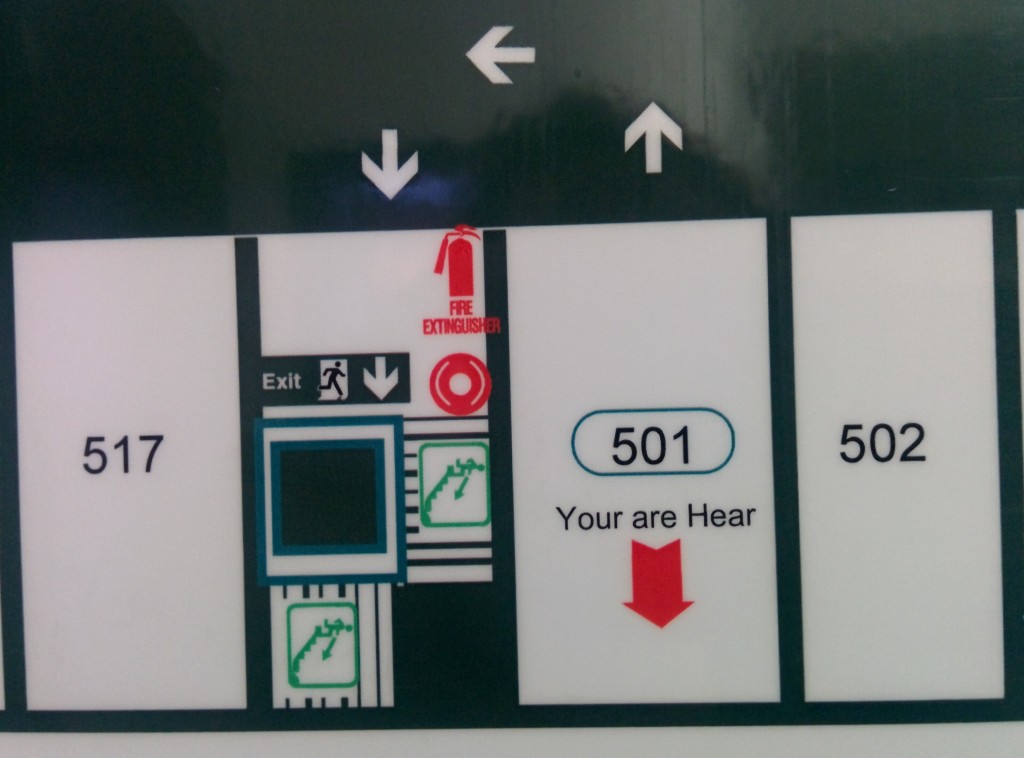
It was ‘hear’ that we also began to realize how poor the internet is in the country. While all of the hotels we booked boasted free wifi, it would turn out that only one of them had internet that worked even one-third of the time. Part of the problem is due to Ethiopia’s landlocked geography: having no natural access to underwater internet cables, Ethiopia has had to rely on cables run through neighboring countries. The first cable of its kind, run from the Red Sea through Djibouti to Ethiopia, was looted and destroyed by rebel groups. Another problem is the lack of competition in the telecommunications industry: there is only one company (Ethio Telecom), owned and run by the government, and no competition is allowed. The government claims that it’s currently focusing on infrastructure (rather than improving overall connectivity in the bigger cities) so it can improve access across the country — as of 2015, only 3.7% of Ethiopians were using the internet!. All of this combined to make for the poorest internet connection of the trip so far.
We had arrived on the night before Timkat, and the town was abuzz with festivities. But the main part of the celebration (which includes prayers, dancing, and a communal renewal of baptismal vows) wouldn’t start until the next morning. The day before is called Ketera and on this day the Tabot (a replica of the Ark of the Convenant) is carried in a big procession from the church of each town to a waterbody where the main festivities will take place (in Gondar’s case, the Bath of Fasilidas).
The main ceremony was set to take place shortly after sunrise. In order to get a seat, we’d need to arrive at 3 or 4 in the morning. Given our epic transfer the day before, we decided we’d skip the early wakeup and join in for the other festivities. But here’s a video of the hundreds of people who rush the water after it gets blessed.
Afterwards, everyone heads home to take a nap and the celebrations begin again in the afternoon, with a procession of the Tabots back to the churches. In the meantime, we explored the town and its rich history.
Gondar used to be the capital of the Ethiopian empire, and it has a crumbling collection of castles and fortresses to show for it. We visited the haunts of Ethiopia’s emperors, the fortress-city of Fasil Ghebbi — the reason that Gondar is called ‘The Camelot of Ethiopia’. Built in the 16th century by the Ethiopian emperor Fasilides and his successors, the city is surrounded by twelve defensive towers (to represent the twelve apostles) and includes libraries, lion houses and palaces that were once decorated with ivory and gold.
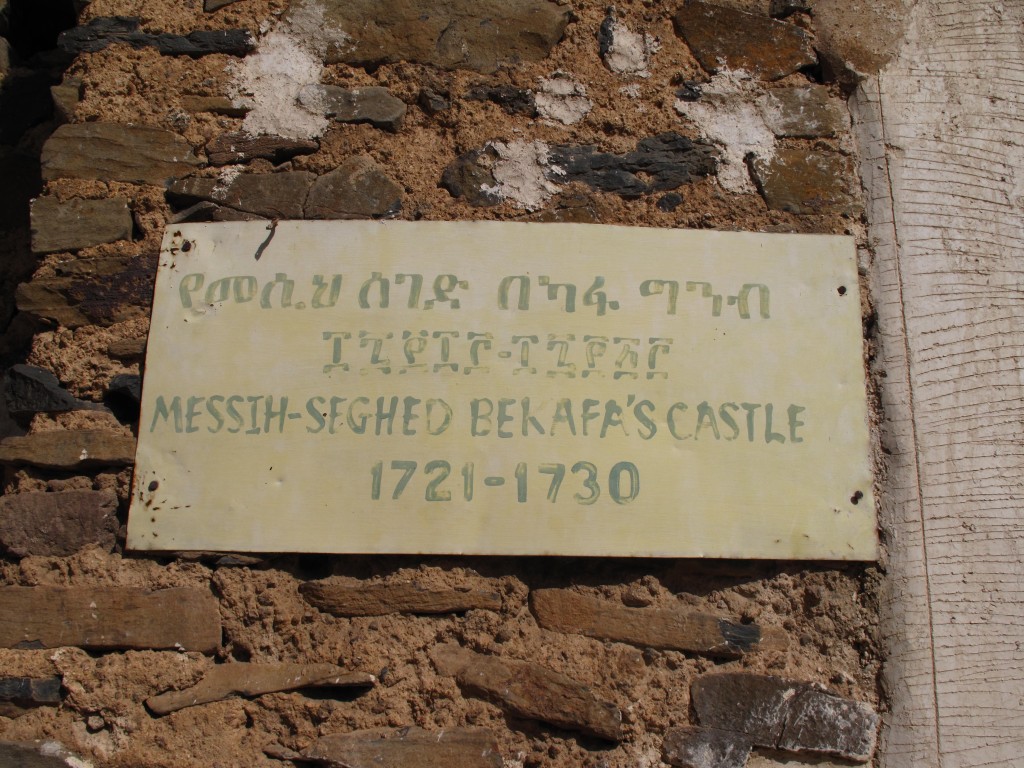
Given the popular festival happening, we were surprised at how few fellow tourists there were. It was both an exciting turn of events (we felt more like we were seeing the town on its own terms, not as part of a canned tourist experience) and a sometimes overwhelming situation (we were often the only targets for people asking for money or for mischievous teenagers fired up by the festivities). This led to a few memorable encounters.
Shortly after we visited the castle, we ran into a guy named Melaku who was extremely excited to introduce himself to us. He didn’t seem like he had an ulterior motive, so we engaged in a little chat with him. He enthusiastically showed us a proper Ethiopian handshake. And he told us about his sons and his job and something about Obama that we couldn’t understand. All the while, his eyes were practically bulging out of his head and he kept high-fiving us and shaking our hands. It wasn’t until later that we realized he was probably sky-high on khat, a popular stimulant.
We said a long goodbye to the manic Melaku and found our way to the site of the parade. The streets and stairways were swelling with people.

The women arrive in their gilded habesha kemis, with their hair in intricate braids like albaso. The men run up and down, yelling and raising their sticks.
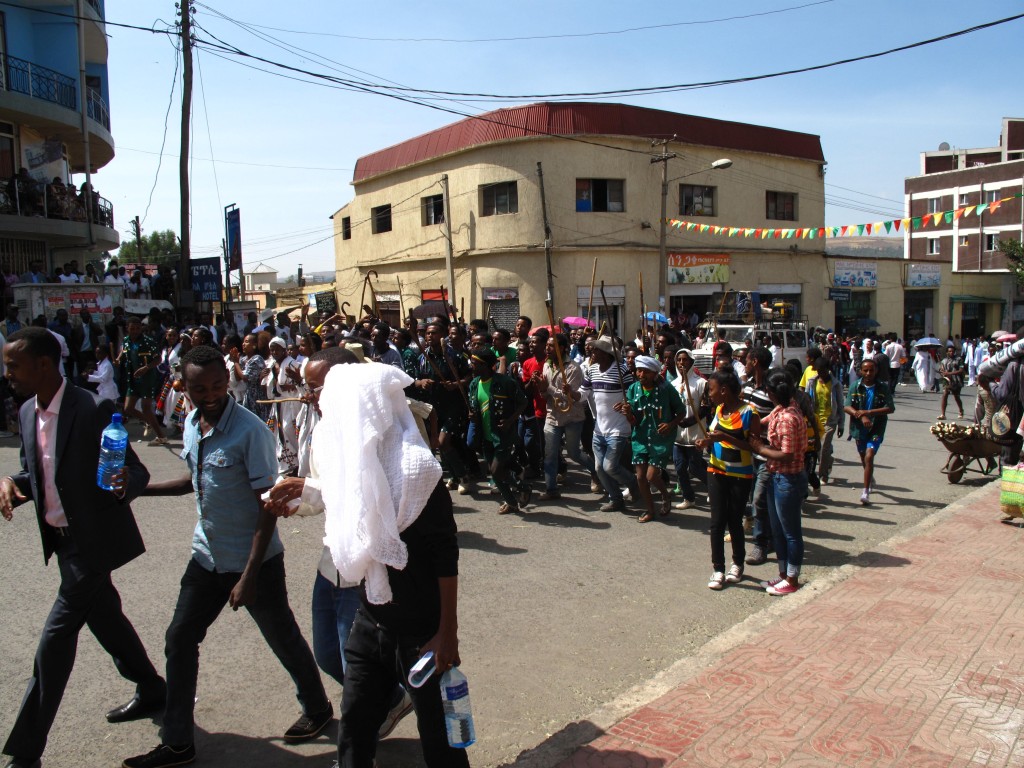
Eventually the floats start arriving, having come from the site of the baptisms. It was hard to get good pictures but it was a wild and crazy time!

After the floats passed, people started following them up the street to the town square. In the process, everyone was being funneled into a small area and there was quickly a mad crush of people. We were being pulled and squeezed in every direction. After a long hot day, we (well, Sarah especially) started to feel a little uncomfortable because it felt like the excited crowd could easily turn into an unpredictable mob. Just before panic began to set in, we saw a group of about twenty nuns all dressed in white – people let them pass and this seemed to calm things down a bit. While watching the nuns walk through the crowds, we’d occasionally catch a strange glimpse of brown. Finally, we realized the nuns were surrounding a naked young man, probably in his early twenties. Definitely not what we were expecting! We’re not sure, but we think that the nuns escort the men that are recently chosen to be priests along the parade route.
After we’d had our fill of the pack of nuns chaperoning new nude priests, we headed back to the hotel to get ready for our next-day’s trip to the Simien Mountains.
